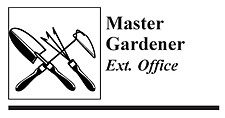February 12, 2009 at 7:49 a.m.
Woodchucks hibernate during the winter and become active in March through October. In early spring the females will have up to six young that will stay with the mother for about six weeks. Like squirrels, they are most active in early morning and late afternoon. They can be found living near brushy cover, woodpiles, or buildings where they have exit holes. The holes are usually about six inches wide and the tunnels can be up to 25 feet long. These tunnels allow them to escape from dogs, fox, coyotes, hawks, and gardeners.
Groundhogs are vegetarians that eat fresh plant sprouts, grasses, clover, garden vegetables, tree bark from fruit trees and shrubs, and even flowers. It seems that its diet includes all the plants that all other garden critters enjoy.
Jennifer Menken, Wildlife Information Coordinator, at the Bell Museum of Natural History, has researched the control of groundhogs. She states that there are ways to deal with them from smell and taste deterrents, changing the habitat to removal, and fences. If the groundhog is just eating grass and clover it may be the simplest to just leave it alone.
If it is eating flowers or vegetables, smell and taste deterrents can sometimes be effective. Smell deterrents include bloodmeal, human hair, and mothballs. They should be placed in small mesh bags, stacked a couple inches above the ground to allow for air circulation. Taste deterrents include soap spray and chili pepper spray. Both taste and smell deterrents need to be reapplied every few days. Habitat changes can also make the area less friendly by removing woodpiles or underbrush that provide cover for the woodchuck.
The best way to control woodchucks is with a fence. Unfortunately it's also expensive and a lot of work. A heavy weight metal mesh such as hardware cloth is a good fencing material. It should be at least 18 inches tall and buried at least four inches deep. If there is extra height at the top of the fencing, push it outward somewhat facing away from the garden. This extra lip will help deter the occasional woodchuck with climbing tendencies.
In some areas shooting is an acceptable method of removal. If not, trapping is the best option. The trap should be a raccoon size live trap that can be purchased or rented from most large garden stores or rental centers. Place the trap in an area where you have seen the woodchuck. Place food such as carrots, apples, and other greens around the outside of the unset trap for a couple of days. After a few days open the trap and bait it with fresh food. Remove the old food from outside the trap.
Check the trap every morning and evening. If you haven't caught the woodchuck after a few days, move to a new location and put in fresh bait. Once you have trapped it and you want to release it, the animal must be released at least five miles away. You will also need permission from landowners before releasing any animal onto public or private land.





Comments:
Commenting has been disabled for this item.